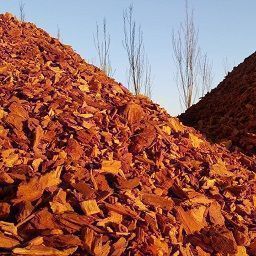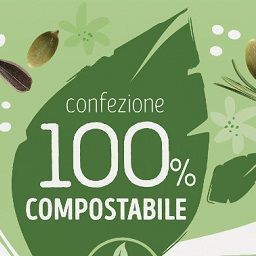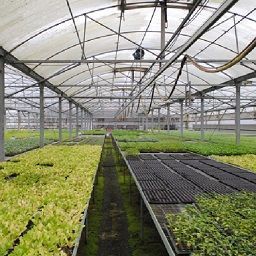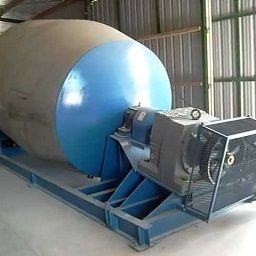Eco-sustainable products Subscribe a Company
Areas of intervention for the Environment Commitment, Digitization, Social Justice, Circular Economy, Eco-sustainability
Renewable energies
Solar energy

Solar energy is a renewable source of energy, practically inexhaustible, clean, which derives from the energy emitted continuously by the sun. Solar energy can be transformed into electrical energy, through photovoltaic panels, or its heat can be exploited directly, i.e. thermal energy through solar collectors.
It can be produced at company level, through the local installation of photovoltaic panels, or it can be used through the normal distribution network, by subscribing to energy suppliers based on renewable sources.
Eolic energy

Wind energy is a very ancient energy source that uses the kinetic force of the wind to transform it into electricity. The equipment with which the force of the wind is exploited today are instead called wind turbines, consisting of a wind turbine on top of a support tower and an electric generator that works exactly on the same principle as windmills.
The generators of wind farms can, in turn, be divided into two categories: horizontal axis, more efficient but also noisier and vertical axis, not influenced by the wind direction and able to withstand strong gusts.
Geothermal energy

Geothermal energy is generated by means of geological sources of heat and is considered a form of alternative and renewable energy. It is based on the exploitation of the natural heat of the planet Earth, which has within it, starting from the earth's surface, a geothermal gradient due to the thermal energy released by the natural nuclear decay processes of radioactive elements such as uranium, thorium and potassium, naturally contained inside the Earth (core, mantle and earth's crust).
Geothermal systems can be steam-dominated, when the high temperature determines the formation of accumulations of steam, or water-dominant, if the water remains liquid. In the first case, geothermal energy can be used to produce electricity by sending the steam, through steam pipelines, to a turbine connected to a current generator. If the fluid does not reach a high temperature, the hot water can be used for the production of heat for example in district heating systems.
Hydroelectric energy

Hydroelectric energy is considered an alternative and renewable energy source, which exploits the transformation of the gravitational potential energy, possessed by a certain mass of water at a certain altitude, into kinetic energy, upon exceeding a certain difference in height; this kinetic energy i finally transformed into electricity in a hydroelectric plant thanks to an alternator coupled to a turbine.
Hydroelectric energy is the main alternative resource to fossil fuels in many countries including Italy. Hydropower is considered very important in the circular economy, and there is work in progress to lower the environmental impact of the plants on fish fauna (fish ladders, fish-friendly turbines).
Biomass energy

Biomass energy is the energy produced by materials of organic-vegetable origin such as plants, marine algae, organic vegetable waste, wood, branches and firewood, processing waste from the food or wood industry, waste and waste from livestock breeding and residues from agricultural or forestry activities. In order to increase the use of this renewable energy source, the cultivation of plant species intended exclusively for combustion has also been undertaken and implemented in recent years.
The biomasses are burned inside a combustion chamber: the heat thus obtained will then be used for the production of electricity or as a heating source.
Production
Use of renewable raw materials

Renewable raw materials are those that, due to their intrinsic characteristics, regenerate or are not "exhaustible" in the "human" time scale and, by extension, the use of which does not affect natural resources for future generations.
Some examples of renewable raw materials are timber, agricultural products, meat, textiles of plant or animal origin, renewable energy sources, etc. Today, with renewable raw materials and therefore the possibility of using and reusing the material "indefinitely", new perspectives are opening up on the whole way we relate to the environment.
Reduction in the use of resources

One of the objectives of Industry 4.0 must be the sustainability of production, i.e. the minimization of the use of energy, water, materials, the reduction of polluting emissions and the final recycling of the product/machinery/plant.
Thanks to the adoption of digital technologies, in fact, it will be possible to reach levels of efficiency hitherto unthinkable from the point of view of the management of environmental resources, starting from the modification and rationalization of production processes up to the real integration between the use optimal use of available resources, the reuse of by-products and the activation of energy flows. In particular, the path that leads to digitalization allows to take into account not only the direct environmental impacts, but also the transversal effects that the environmental improvement resulting from the management of one resource can cause on the others, or the so-called "cross media effects" in order to avoid that an excessive effort in reducing a form of pollution results in its transfer to another environmental medium (air, water, soil).
Use of waste materials from other companies

The use and sharing of waste materials between companies is a crucial point in the development of the circular economy. Sharing takes place through direct contact between companies or through the creation of databases and information systems that allow research.
Through innovative methods, waste materials can be recycled and transformed into raw materials for other companies.
Extending the durability of products

The issue of the durability of a product (shelf life) is crucial for the affirmation of the ecological transition and, if approached objectively and participated by the entire supply chain (producers, distributors, consumers, etc.) it can be strategic for the prevention of waste, the implementation of sustainable design and for the correct protection of the consumer.
To extend the shelf life of a food, we act on 4 variables: modification of ingredients and properties, modification of the production process, use of more performing packaging, modification of environmental variables affecting conservation.
Marketing
Short chain sale

We talk about a short supply chain to indicate a product distribution system that uses a small number of players, such as the fresh produce supply chain. Usually the shorter the supply chain, the more the development of local economies is promoted.
The short supply chain is an added value for food companies since, thanks to it, companies are able to ensure the highest quality of products. What is sold through direct sales or through short chain companies is certainly fresh, not industrial, often healthier thanks to the use of pesticides or preservatives strictly necessary during industrial processing.
Sale to FoodCoops and Purchase Groups

A Solidarity Purchase Group (SPG) is a group of families who shop together, directly from the producers, with whom they establish a relationship of trust.
Thanks to the SPG, a synergy is created between producers and buyers which brings numerous benefits to both. In particular, the demand by group for products of authentic quality, also from an ethical and social point of view, and the willingness to pay the right price for the products, favors the possibility of companies to invest in more eco-sustainable production processes.
Willingness to repair sold products

Guaranteeing the repairability of a product, both through the availability of spare parts, and in providing a quick and efficient repair workshop is one of the cornerstones for manufacturers who want to adhere to the principles of the circular economy.
Repairability is a diametrically opposed view to the philosophy of planned obsolescence, according to which a product must have a limited life span in order to sell new ones to stimulate the economy.
Environmental labeling

An environmental label is a symbol that manufacturers place on their products to demonstrate that their environmental impact is lower than products of the same type. Many environmental labels are placed voluntarily by manufacturers.
There are many models of environmental labels in the world, each functional to certify certain characteristics of the products. Some labels have a very narrow range: for example, the "100% recycled" label only tells us that that product is made of recycled materials, but it does not tell us anything about how it was produced, if the process has generated harmful emissions, if it exploited child labor, if the workers were paid fairly or if the logistical transport took place in an environmentally sustainable way.
Packaging
Reuse of packaging

The main objective of the circular economy is to strengthen the reuse of packaging rather than recycling. By having adequate infrastructures, such as distributors of bulk products on tap, we can allow the buyer to reuse the same packaging numerous times.
Worthy of note is a new type of completely recyclable plastic: PDK or poly-diketenamine is composed of a polymer that can be re-split into re-polymerizable monomers.
Biodegradable packaging

Biodegradable packaging can help us improve the situation with regard to waste scattered in the environment, some clearly visible to the naked eye, others less but still harmful. Research is advancing and proposing innovative solutions for biodegradable food packaging, it is also up to us to dare, change habits, invest in the future by changing present habits.
These packaging are subject to the standard (UNI EN 13432) which indicates the necessary characteristics. These packaging must be made of biodegradable material, that is, it must biodegrade to 90% in less than 6 months, it must also be "disintegratable", that is, it fragments and loses visibility.
Compostable packaging

Compostable packaging reduces the environmental impact as it degrades easily, reducing waste and not creating garbage. From this point of view they are undoubtedly a good idea were it not tht most compostable food containers actually contain Pfas.
The search for innovative compostable packaging materials, which do not contain molecules harmful to people and the environment, is an interesting branch of research in the ecological transition.
Mobility and transport
Natural gas vehicles

The 80% reduction in the production of carbon dioxide, the absence of particulate matter, make methane the most ecological fuel among those containing carbon. The economic saving for the same distance obtainable with a methane car is about 60% compared to petrol.
If methane is not obtained from extraction, but from renewable sources such as biomass, then its eco-sustainability and full compliance with the principles of the circular economy is guaranteed.
Hybrid vehicles

A hybrid vehicle, more properly a hybrid propulsion vehicle, is a vehicle equipped with a propulsion system with two or more components, such as an electric motor with a thermal engine, which work in synergy with each other. Vehicles in which two or more forms of energy storage coexist, for the purpose of generating mechanical energy, are called hybrid vehicles.
The vehicles are divided into mild hybrid (slightly hybrid) and full hybrid (totally hybrid). The former have a propulsion system consisting of a thermal unit (traditionally fueled by gasoline), an electric one, and one or more lithium-ion batteries that power the engine itself. In full hybrids there is a combustion engine and electric motor, powered by a lithium-ion battery. The difference compared to the Mild Hybrids is that you can travel a few kilometers in fully electric mode, if the conditions allow it and the battery charge level allows it.
Electric vehicles

Electric vehicle means a means of transport that uses an electric propulsion system for its operation which is generally powered by rechargeable batteries, but which can also be connected to a power system via overhead networks with suspended wires, rails or conductive power bands for lateral sliding contacts.
Although locally zero-emission, the calculation of overall emissions must include both emissions from power plants and emissions from the production of coal, natural gas and other fossil fuels used by power plants.
Waste
Prevention in the production of waste

The production of waste essentially represents a loss of material resources and energy. Misaligning the growth of waste (waste from consumption and production) from economic growth and preventing the production of waste: these are the strategic objectives of Community policies in relation to the use and management of resources.
Prevention means reducing the quantity and dangerousness of waste to be managed. Prevention measures can be applied to all phases of the life cycle of an asset, starting from the design and production, marketing, distribution, sales and use phase up to its disposal at the end of its life.
Sharing of waste with other companies

The management of waste as a by-product is in line with the same principles of circular economy that inspire recent EU and national economic, production and social policies.
The circular economy model, in fact, is based on the prevention, reuse and recycling of waste in a partnership logic between private and/or public entities, which can only be achieved through the sharing of technical and scientific know-how, generating and preserving the value of each resource, including the materials until now defined as "waste".
Transformation of waste into compost

Composting is the process that makes it possible to create, starting from the treatment of waste and waste materials from production processes, a stable and sanitized material for use in agriculture and horticulture: compost.
The basic principle is to reproduce, in controlled situations, the natural biological process of decomposition of the organic substance contained in the waste, by the microorganisms present in the environment. The result, after a variable time depending on the type of process adopted, is precisely the compost. This is how a waste material from the production chain or from civil consumption becomes a new resource for the first phase of the agricultural supply chain.
Energy production from waste

Organic waste, obtained thanks to separate collection, is subjected to an anaerobic digestion process for the production of biogas. This is produced not by drilling the hidden deposits in the deepest parts of the earth but by fermenting the waste of organic origin in specific plants.
Biomethane is therefore produced as long as you want, it is inexhaustible, and production can be increased simply by building other plants. Making the process one of the purest examples of ecological transition.
Reduction of negative emission levels

To achieve the objectives of reducing harmful emissions foreseen in the 2030 agenda, companies can implement a multitude of technological devices, depending on the specific productions.
Cultivation
Precision agriculture

Precision agriculture is an agricultural activity management strategy with which data are collected, processed, analyzed and combined with other information to guide decisions based on spatial and temporal variability in order to improve resource efficiency, productivity, quality, profitability and sustainability of agricultural production.
Currently it is based on the use of satellites and computer systems with numerous sensors, both remote and proximal, guidance systems, methods for assessing the quality of products, etc.
Protected agriculture

These are eco-sustainable techniques, with low environmental impact and able to guarantee production even in the presence of unfavorable physical and climatic conditions.
Soilless production systems such as hydroponics, substrate cultivation and hydroculture are used.
Vertical farming

Vertical farming is a soilless cultivation method in closed greenhouses, which develop in height on several levels, air-conditioned and automated, which form large plants. These systems are 75% more productive than traditional field agriculture and consume very little water, about 95% less.
Furthermore, vertical farms have no geographical constraints, as they can also find a place in urban areas and offer fresh and 0 km products.
Protection of biodiversity

The protection of biodiversity in the agricultural sector responds to the need to reconcile productive agriculture with the protection of ecosystems, maintaining the complexity and genetic richness of agricultural species, both cultivated and wild.
A practice in this sense is that of permaculture which is inspired by the principles of nature and natural systems that have evolved on the planet over thousands of years. Natural systems, such as forests, are places rich in biodiversity, with maximum biomass productivity, extremely efficient in terms of recycling of nutrients, and are SUSTAINABLE in the true sense of the word.
Irrigation
Optimized irrigation systems with control unit

The irrigation control unit allows the automation of the irrigation system with the aim of administering the right amount of water by programming the times and duration of each cycle. In the case of large areas, the multi-zone control units allow the irrigation to be divided into sectors by choosing different departures, times and durations from sector to sector. The rain sensor is the accessory connected to the control unit that interrupts the cycles in case of rain.
Two distinct irrigation methods can be implemented: by dripping (or micro-irrigation), or underground, to reach the roots of the plants directly.
Reuse of purified waste water

The recovered wastewater can be reused both in the civil sector, for urban and recreational applications, production, for agricultural and industrial uses.
Agriculture is today the productive sector that most frequently makes use of it, as it is significantly subject to the effects of water scarcity.
Rainwater collection and storage

Rainwater recovery systems for farms, wineries and nurserymen exploit the phenomenon of intense rains concentrated in short periods that increasingly affects the Italian territory and which in recent years has led to the lack of billions of cubic meters of water.
These systems are generally made up of prefabricated concrete tanks, and allow you to accumulate a water reserve at a very low cost, available and ideal for irrigation.
Irrigation with phyto-purified groundwater

Groundwater in former industrial areas can be contaminated both by volatile organic compounds (VOC) and by metals such as iron and manganses. The nature-based solutions (NBS) of constructed wetlands have proven to be a valid option for the treatment of groundwater remediation and the recovery of former industrial areas.
Constructed wetland is a wastewater treatment system, designed and built to artificially reproduce the natural self-purification processes present in humid environments. The purification activity is determined by complex interactions between chemical, physical and biological processes deriving from a combined action between substrate, plants, wastewater and microorganisms present. Phytodepuration is a natural wastewater purification system consisting of a waterproofed basin filled with gravelly material and vegetated by aquatic and non-aquatic plants.
Fertilization
Use of animal fertilizers

Vermiculture is the breeding of earthworms on organic waste. The product is an important organic fertilizer, the so-called vermicompost. By digging tunnels in the ground, earthworms plow it naturally and ingesting the organic residues present cause it to decompose and then transform into simpler compounds.
Using earthworms to decompose organic waste and produce a valuable fertilizer, currently in great demand on the market and useful for reducing waste disposal costs in the agri-food chain.
Fertilizers recovered from waste (NRC)

The Nutrients Recovery Center receives organic matrices rich in nutrients from livestock farms, agri-food industries, civil water treatment plants as well as from the separate collection of the wet fraction in urban areas. These matrices are therefore processed, sterilized, stored and, after checking them, optimized for use by injection in nearby agricultural land.
The treatment carried out by the NRC makes it possible to produce a digestate capable of returning to the soil what was taken from it during agricultural activities, thus preserving at the same time both the quality of the soil and the biodiversity of the areas, also allowing to carry out a action to combat and prevent desertification.
Breeding
Local forage farming

There are two main haymaking techniques, the traditional and the two-stage one. They differ in the type of construction site used: in the first case the whole process takes place entirely in the field, in the second case, after a phase of pre-drying in the field, the forages are taken to the barn to complete the drying.
The haymaking machines work between the cutting of the grass and the collection of the product ready to be brought to the company and are divided into: mowing machines, machines for turning and swathing and harvesting machines.
Anaerobic digestion plant

Anaerobic digestion refers to the degradation of the organic substance by microorganisms in conditions of anaerobiosis. This is a different process than composting, which is strictly aerobic.
Digestion of biodegradable organic material involves the use of many different species of naturally occurring bacteria, each of which plays a different role at a different stage of the digestion process. Strict control of the operating conditions of a digester is essential to ensure bacterial growth and the actual occurrence of the biochemistry necessary for the successful digestion.
Workers
Workers health and security

Occupational health and safety refers to a set of ideal conditions for the health, safety and well-being of workers in the workplace, which can be achieved through the adoption of specific preventive and protective measures, in order to avoid or reduce to the minimum possible the exposure of workers to the risks associated with work activity, reducing or eliminating accidents and occupational diseases.
The specific risk factors for occupational health and safety vary by economic sector and by activity. Effective prevention against accidents necessarily involves serious and up-to-date training that must be provided not only to workers, but also to managers.
Fair salary of workers

Guaranteeing fair remuneration to all workers in proportion to the quantity and quality of their work and in any case sufficient to ensure a free and dignified existence for them and their families is a foundation of the principles of the circular economy. deals only with products and processes, but also with social responsibility and solidarity.
Equal opportunities

Equal opportunities are a legal principle understood as the absence of obstacles to the economic, political and social participation of any individual for reasons related to gender, religion and belief, race and ethnic origin, disability, age, sexual orientation or political.
We support the training of managers on respect for the private life of their collaborators and of human resources managers with regard to non-discrimination and support for parenting, as well as accompanying programs offered to employees who are absent for parental leave (not only women)

